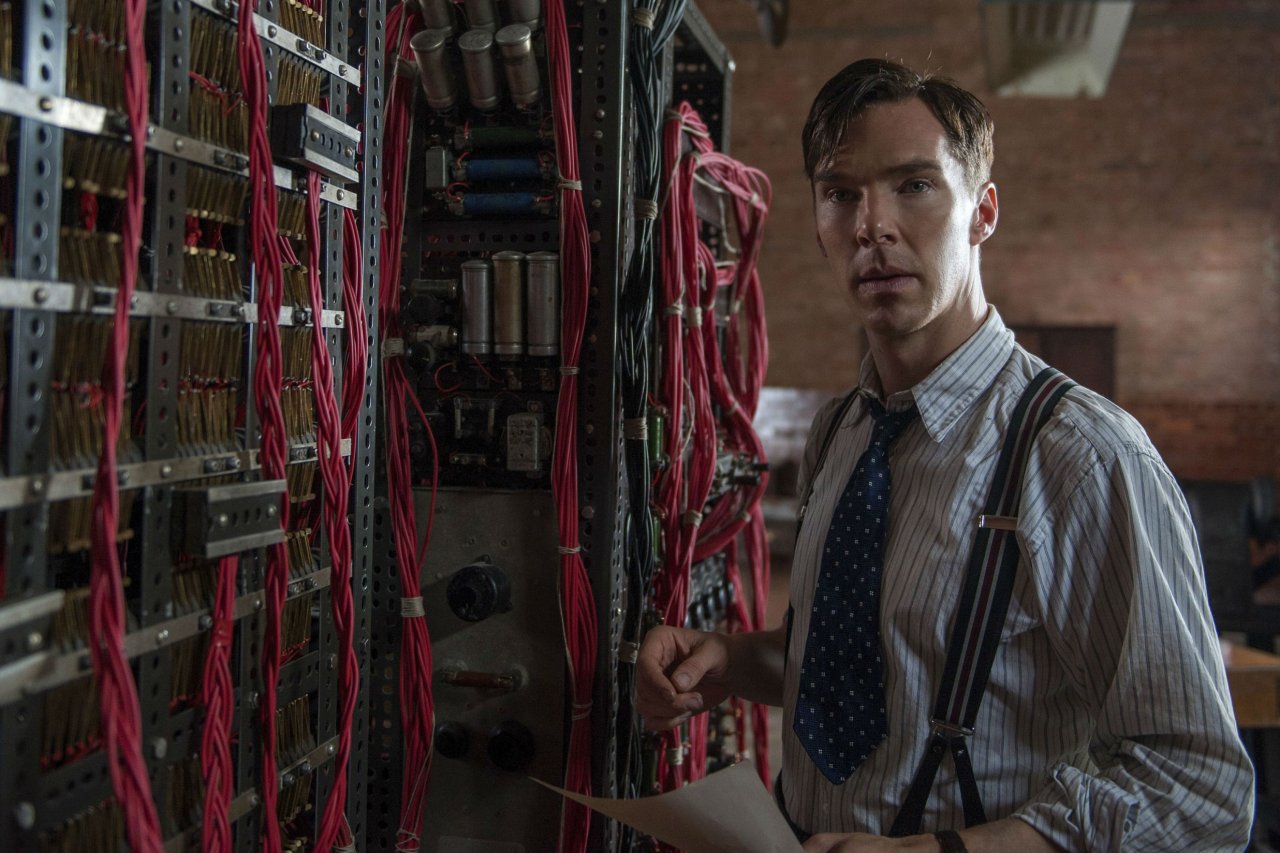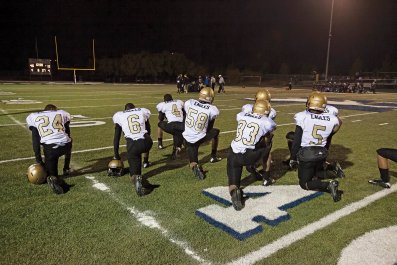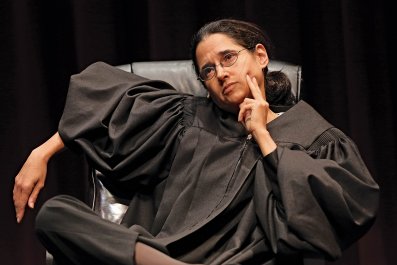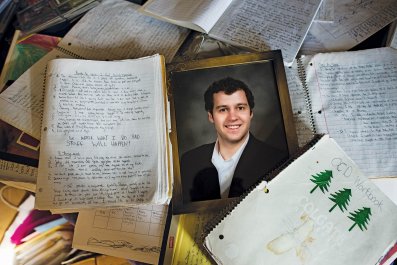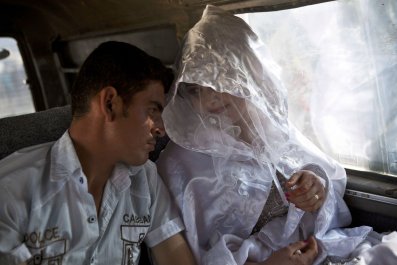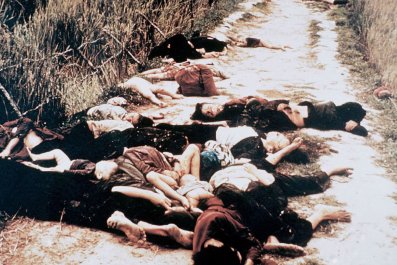It involves hours staring at a piece of paper or screen. Scores of frustrated attempts, blind alleys, cruel false hopes and a very remote chance of success. Yet it is utterly absorbing and, perhaps surprisingly, increasingly fashionable among schoolchildren. What on earth is behind the appeal of code breaking?
Dr Andrew Hazel of the mathematics department at Manchester University should know – he, with a colleague, set the clues for the recent online cryptography competition held to coincide with the release of The Imitation Game, in which Benedict Cumberbatch (the actor who made his name as the eponymous detective in the 2010 TV series Sherlock) plays British mathematician Alan Turing, credited with breaking the daily code set by the German Enigma machine. The online competition has been entered by 25,000 people, although at the time of writing, only 200 believed they had solved all three clues. "Linguistics, logic and analysis are all involved. It's the intellectual challenge and the sense of competition," says Hazel. "The thought that, 'I'm better than the setter.' It's very natural that once you've started, you don't want to be beaten." In other words, the same mentality that leads to any mathematical or scientific breakthrough.
Hazel based his Imitation Game competition around the true story of Turing burying two bars of silver near Bletchley Park when he thought the British pound might collapse. Even now, nowhere is that desire not to be beaten, the sheer tenacity of the code breaking mentality, illustrated more clearly than at this base of the Government Code and Cypher School during the second world war, now a museum. It is the everyday objects there that bring the near-Sisyphean labours of those code breakers into focus. The Woods Ware "Beryl" green teacups. The Bakelite phones. The ashtrays. The copy of Alice in Wonderland in Turing's office. All of which seem so desperately human compared to the scale and complexity of the machinery, housed in simple buildings – the huts – that demonstrate the unimaginable difficulties of the code breakers' task. Not only did Turing's team shorten the war by perhaps two years saving countless lives, but Turing himself is also regarded as the father of modern computer science and artificial intelligence. (He invented the Turing Test; in which a machine can be defined as intelligent if it can fool its interrogator into believing it is human.) It's no mean achievement for one man whose life was brought to an abrupt end – Turing died at 41.
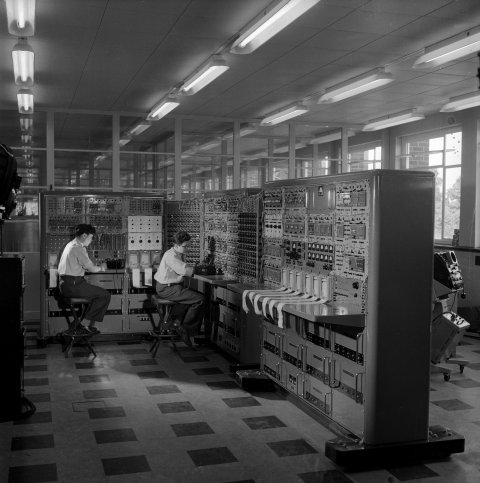
Bletchley itself was originally an over-the-top Victorian pile, once described as "maudlin and monstrous", centre of the social life of its financier owner. Then, in 1938, Admiral Hugh Sinclair bought it with his own money for MI6 operations. He employed a chef from the Savoy, and under the guise of "Captain Ridley's shooting party", tried it out as the out-of-town centre for cracking codes and ciphers.
The house's former glitzy life is still evident in the ornate panelling and the griffins at the door. The demanding nature of the work that took place in the spartan huts there in the war, unknown and uncelebrated, seems peculiarly stoic and moving in comparison. Poets, scholars, writers, naval heroes and maths geniuses all slaved away here in secret. So secretly, in fact, that there are only a few papers (charred) and few photographs remaining.
Bletchley must have seemed luxurious once; a grandiose Victorian mansion with its own lake and pleasure grounds. Gradually, those grounds filled with huts of code breakers including Hut 8, where, as anyone who has seen The Imitation Game knows, Turing finally cracked Enigma. For 50 years, that achievement had to remain an official secret, while all around Bletchley Park sprang up factories and roundabouts, the urban sprawl of Milton Keynes.
Arcadia it is not.
Now, as the details of Turing's heroic career become mainstream, courtesy of the new film, so has – over the past two or three years – code breaking itself. In 2012, the mathematics department of Manchester University, where Turing was a reader after the war, set up The Alan Turing Competition in his memory. Aimed at schoolchildren, it demanded, through a narrative in a number of chapters, that children break codes in order to carry on with the story. Hundreds of teams of schoolchildren across the country entered. It was such a hit that there are now special code-breaking days at the university. The nature of the competition changes. It could be frequency analysis (substitute the most common symbol for "e" – easy when you know how), a code (words swapped for words), cipher (letters for other letters or symbols), or some version of any of them. A love of code-breaking often starts young. Award-winning children's author Lauren Child's latest heroine, Ruby Redford, is a 13-year-old code breaker.
The idea that the British love code breaking more than say the Poles, who also excelled at the pursuit, or the Germans, who, after all, came up with Enigma in the first place, is hard to prove. But the British fondness for crosswords, the multi-faceted origins of our language and love of word play (codes are often broken not so much by logic as an ability to predict what the other person might want to say), of mystery solving, is hard to deny. And, as a nation, the Brits are peculiarly good at it. It is widely believed that the Napoleonic War, too, was shortened drastically by a British code breaker who worked for the Duke of Wellington, one Major George Scovell, who broke what the French considered an unbreakable code. How? Like Turing, a combination of application, imagination and an unbelievable doggedness – a willingness, like his spiritual descendant – to spend two years or more on the task. And then, vitally, to keep his discovery quiet.
Many of the Bletchley code breakers were chess players of note. Hugh Alexander, who worked for Turing, for example, was twice British chess champion – though never a grandmaster as the Russians wouldn't let him play on their soil because of his war record. He was known for his odd hours – he could work all day and all night without tiring. There is, of course, also a James Bond link – Ian Fleming worked in naval intelligence and had much contact with Bletchley.
With the help of Manchester University, Bletchley Park and Cumberbatch, it seems that Alan Turing will be able to add to his legacy the fact that a new generation of British schoolchildren will get to experience the thrilling misery of code breaking; intensely frustrating with rare moments of joyous epiphany. He has made a traditionally geeky pastime heroic, along with the idea that perseverance is all. And what could be better a lesson than that?



